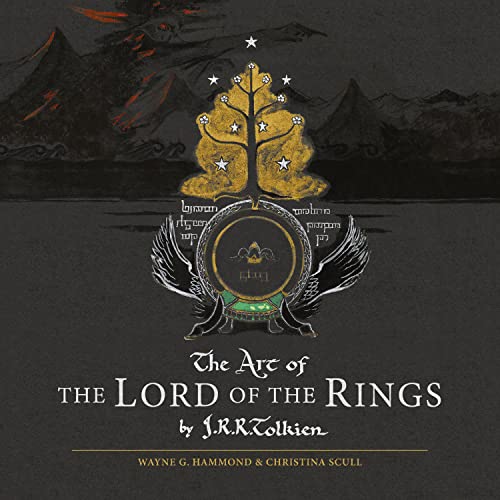Letters  Back to results
Next
Previous
(did you mean Carpenter's Letter #157?)
Back to results
Next
Previous
(did you mean Carpenter's Letter #157?)
Next Previous
 Back to results
Next
Previous
(did you mean Carpenter's Letter #157?)
Back to results
Next
Previous
(did you mean Carpenter's Letter #157?)
TCG Letter #157
From
J.R.R. Tolkien
To
George Sayer
Date
7 August 1952
Type
Autograph Letter Signed
Transcript
Complete
In 1937, at the urging of his publishers, Tolkien began writing "a new Hobbit." Due to his full-time academic position, progress was slow, and he abandoned the manuscript for most of 1943. He began writing again in April 1944, and completed a revision of the earlier portions of the work in 1949. In April 1952, Collins declined to publish the work; by August 1952, nearly every major British publisher had rejected the work.
George Sayer received a copy of Tolkien’s manuscript from their mutual friend, C. S. Lewis. Sayer and his wife became enthusiastic fans of the work, and invited Tolkien to stay with them at Malvern in August when he was on break. Having heard that publisher George Allen & Unwin had an interest in publishing the work, Tolkien writes George Sayer to request the return of the manuscript and to coordinate a visit.
During his visit, at Sayer’s urging, Tolkien created the first recorded readings from The Lord of the Rings which still survive. Sayer also encouraged Tolkien to send the manuscript to Rayner Unwin. In a letter to Rayner Unwin enclosing a blurb from Sayer for The Lord of the Rings, in which Sayer refers to Tolkien as the "greatest living poet," Tolkien refers to Sayer as "the most normal reader and liker of the work that I could think of…the blurb… surprised me."
Of the visit, Sayer recalls: “To entertain him in the evening I produced a tape recorder…He had never seen one before and said whimsically that he ought to cast out any devil that might be in it by recording a prayer, the Lord’s Prayer in Gothic, one of the extinct languages of which he was a master… asked if he might record some of the poems in The Lord of the Rings to find out how they sounded to other people. The more he recorded, the more he enjoyed recording and the more his literary self-confidence grew…I think I asked him to record what he thought one of the best pieces of prose in The Lord of the Rings, and he recorded part of ‘The Ride of the Rohirrim.’ ‘Surely you know that’s really good?’ I asked after playing it back. ‘Yes,’ he said, ‘it’s good. This machine has made me believe in it again. But how am I to get it published?’
George Sayer received a copy of Tolkien’s manuscript from their mutual friend, C. S. Lewis. Sayer and his wife became enthusiastic fans of the work, and invited Tolkien to stay with them at Malvern in August when he was on break. Having heard that publisher George Allen & Unwin had an interest in publishing the work, Tolkien writes George Sayer to request the return of the manuscript and to coordinate a visit.
During his visit, at Sayer’s urging, Tolkien created the first recorded readings from The Lord of the Rings which still survive. Sayer also encouraged Tolkien to send the manuscript to Rayner Unwin. In a letter to Rayner Unwin enclosing a blurb from Sayer for The Lord of the Rings, in which Sayer refers to Tolkien as the "greatest living poet," Tolkien refers to Sayer as "the most normal reader and liker of the work that I could think of…the blurb… surprised me."
Of the visit, Sayer recalls: “To entertain him in the evening I produced a tape recorder…He had never seen one before and said whimsically that he ought to cast out any devil that might be in it by recording a prayer, the Lord’s Prayer in Gothic, one of the extinct languages of which he was a master… asked if he might record some of the poems in The Lord of the Rings to find out how they sounded to other people. The more he recorded, the more he enjoyed recording and the more his literary self-confidence grew…I think I asked him to record what he thought one of the best pieces of prose in The Lord of the Rings, and he recorded part of ‘The Ride of the Rohirrim.’ ‘Surely you know that’s really good?’ I asked after playing it back. ‘Yes,’ he said, ‘it’s good. This machine has made me believe in it again. But how am I to get it published?’
Next Previous









 5
5 236
236